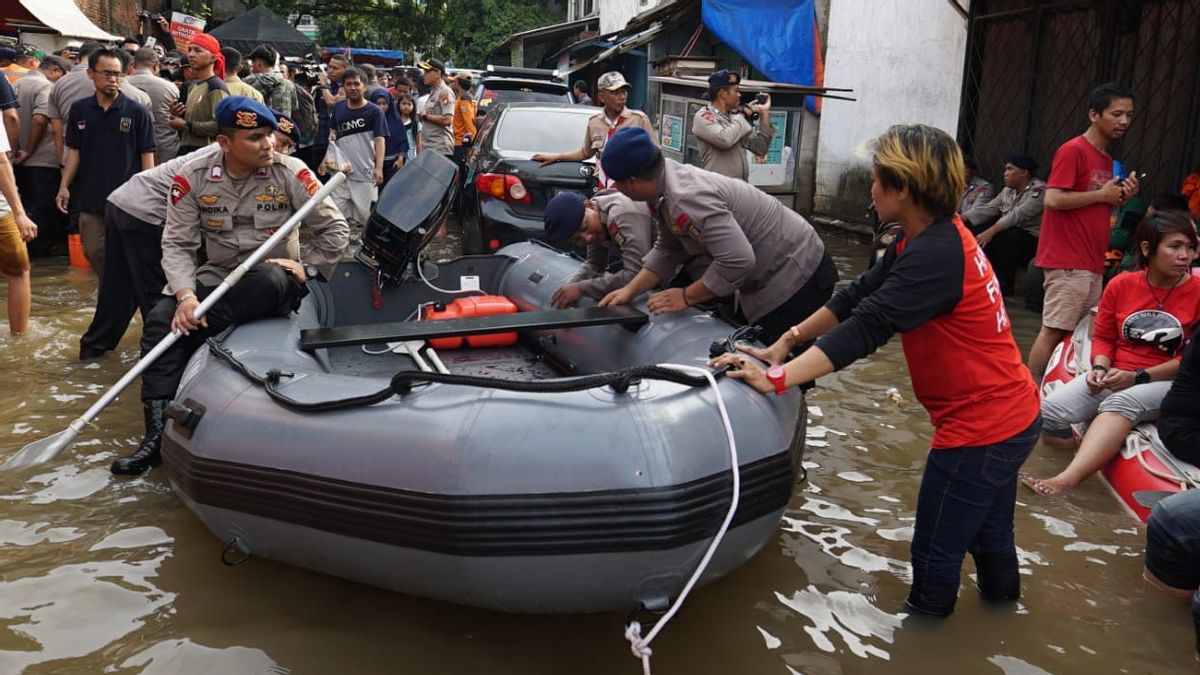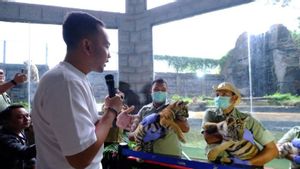JAKARTA - To deal with flooding in the Jakarta, Bogor, Depok, Tangerang and Bekasi (Jabodetabek) areas, including in West Java and Banten Provinces, as happened in early 2020, the Ministry of Environment and Forestry (KLHK) took various measured steps. Among other things, increasing the forest rehabilitation program in the upstream watershed (DAS) and taking steps to enforce environmental laws.
Minister of Environment and Forestry Siti Nurbaya said in Jakarta, Wednesday, January 8, zoning will be carried out specifically for the Mount Halimun Salak National Park in the Ciberang and Ciburian watersheds.
"Including the red zone where there should be no settlement at all as a dangerous and high risk zone," said Siti.
The day before, in a cross-ministerial coordination meeting led by the Minister of PMK, Siti emphasized the need for immediate handling of floods, especially in Jakarta, Bogor and Lebak, for forest and land rehabilitation (RHL) to be improved.
"Apart from that, the construction of Soil and Water Conservation (KTA) buildings such as retaining dams, control dams, and gully plugs in the upstream area," said Siti, in a written statement received by VOI.
Enforcement of environmental laws is also important because of the poor management of waste, the existence of Open Dumping Final Processing Sites (TPA), and illegal TPS in several areas of Jabodetabek.
The three regions with the highest percentage of unmanaged waste were Bogor Regency (93.42 percent), Bekasi City (75.72 percent), and Bogor City (75.51 percent). Apart from polluting the environment, this unmanaged waste also enters water bodies including drainage and even rivers. This causes the water carrying capacity to decrease and causes flooding.
"Particularly in Lebak and partly in Bogor, mining law enforcement without permits is being carried out that threatens the watershed. Technical meetings at the Ministry of Environment and Forestry and field work by the Director General and the Minister regarding this matter continue and will be intensified," Siti explained.
From 2015 to 2019, 1,224 ha of critical land has been rehabilitated in the upstream Ciliwung and Cisadane watersheds. The Ministry of Environment and Forestry will continue to improve the program so that the critical and very critical lands in the upstream 13 watersheds can be restored.
In this regard, the Ministry of Environment and Forestry has taken the main steps including Forest and Land Rehabilitation (RHL) by planting and building Soil and Water Conservation (KTA) as well as law enforcement against waste management and mining without permits.
The English, Chinese, Japanese, Arabic, and French versions are automatically generated by the AI. So there may still be inaccuracies in translating, please always see Indonesian as our main language. (system supported by DigitalSiber.id)








